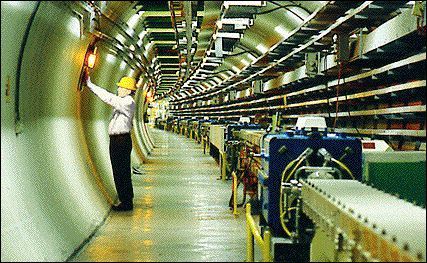Can the Laws of Physics be Unified?
| ||
|
Physicists have not yet found a single, elegant set of laws describing all the fundamental forces of nature. But since Einstein's day they have made important progress. Experiments using particle accelerators have pointed the way to new mathematical rules, which cover both electromagnetic forces and the nuclear forces that shape the cores of atoms. These rules leave much to be explained, but they do predict almost everything about the elementary behavior of material particles. Everything but gravity. Nobody has found a way to fit Einstein's curved space together with the wholly different quantum approach that works for electromagnetic and nuclear forces. Recently some physicists proposed a third approach: "string theory." They picture fundamental particles as tiny loops, which vibrate like violin strings in a fantastic multi-dimensional space. Surprisingly, gravitation emerges from these equations as a natural by-product. However, nobody has found a way to test string theory experimentally. Unless that can be done the theory will remain, like Einstein's attempts at unified field equations, a hopeful curiosity.
or EXIT to a site on string theory from NOVA. or EXIT to an "official" String Theory Site. | ||
|
| ||
Image courtesy CERN.
|
| Science and Philosophy I | ||||
